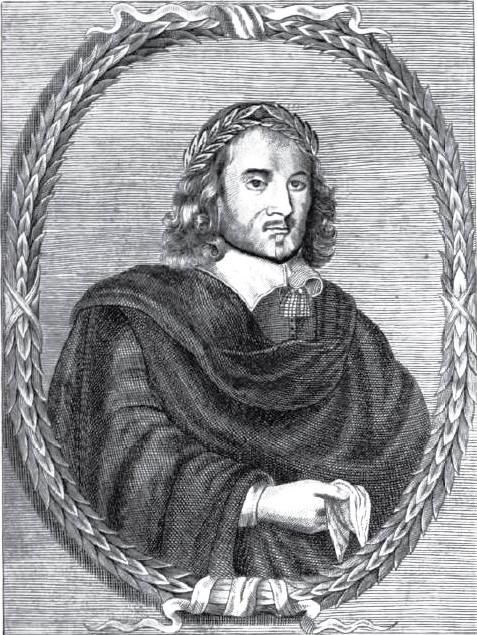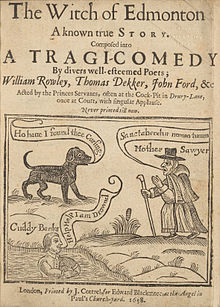By Thomas Middleton and William Rowley
Kessinger Rare Reprints
Copyright: © 2010
Original Performance Date: 1622
Original Publication Date: 1652


Changeling Definition:
- a child surreptitiously or unintentionally substituted for another. (dictionary.com)
- a child who is suspected not be a couple’s real child. (vocabulary.com)
- (in folklore) an ugly, stupid, or strange child left by fairies in place of a pretty, charming child. (dictionary.com)
- a human-like creature found in folklore throughout Europe. A changeling was believed to be a fairy that had been left in place of a human (typically a child) stolen by other fairies. (wikipedia.com)
- Synonyms: oaf, dummy, fairy, gnome, pixie, swapling, shapeshifter, substitute
- Archaic: turncoat, imbecile
- First use: 1534
Middleton Biography:

Thomas Middleton, born in London in 1580 living for 47 years, was a famous and prolific Jacobean playwright and poet. He wrote about 27 plays, 18 alone and the remainder with other English playwrights including, William Shakespeare (Women of Timons), Thomas Dekker (The Roaring Girl, et al), John Fletcher (Nice Valour, et al) and of course William Rowley. Middleton’s plays raised him to the loftiest heights of seventeenth century theater, with his fame only eclipsed by Shakespeare and possibly Ben Jonson (Volphone) and John Webster (The White Devil).
His oeuvre included comedy, tragedy, satire, and masque. His greatest play was his great tragedy, The Changeling, which combined violence, intrigue, and a modicum of comedy to produce one of literature’s most intriguing characters: Beatrice-Joanna, a psychopath only surpassed by Patricia Highsmith’s twentieth century protagonist and rogue Mr. Ripley.
(Masque plays were performances that included music, dance, poetry, elaborate sets, and costly costumes which included the wearing of masks. These plays were immensely popular in London theaters and in the courts of nobility such as the English queen Anne of Denmark and Louise the XIV of France. Masque plays can be traced, in various forms, from Greek theater during the Golden Age of Athens to present day Broadway in New York.)
Rowley Biography:

William Rowley, born in London(?) in 1585, living until the age of 39, is best known for works written in collaboration with other contemporary playwrights. Today he would be categorized as a freelance writer, an independent that works for a set fee. His work is easy to identify as his unexceptional verse stands in stark contrast to the often-polished language of his co-writer(s).
Plays written solely by Rowley are rare and generally of contested authorship. The fact that he co-authored so many plays with the greatest playwrights of his time suggests they saw something in him that critics of today do not. His name lives on though, mainly because of his collaboration with Middleton on ‘The Changeling‘.
The Changeling:
In an attempt to ascertain who wrote what in this play, Pauline Wiggin’s writing style studies in 1897 along with David Lake in 1975 parsed the authorship in the following manner: Middleton likely wrote Act II; Act III, scenes i, ii, and iv; Act IV, scenes i and ii; Act V, scenes i and ii while Rowley likely wrote Act I; Act III, scene iii; Act IV, scene iii; Act V, scene iii. This division of labor credits Middleton for the main plot and Rowley wrote the subplot along with the opening and closing scenes. The main plot of ‘The Changeling‘ is taken from John Reynolds’ 1621 stories.
The main plot revolves around Beatrice-Joanna and her betrothed, Alonzo, along with the one she genuinely loves: Alsemero. To clear the way for her to marry Alsemero she persuades De Flores, her father’s ugly servant, and one who also secretly loves her, to murder Alonzo. Thus, tragedy ensues. The sub-plot occurs in a nearby madhouse run by a Dr. Alibius who is jealous of and afraid that his young wife Isabella will not be loyal to him because he cannot satisfy her. Lollio, the doctor’s servant who also loves Isabella is entrusted by Alibius to make sure she is kept safe from any unwanted romantic advances. Lollio assures him that no madmen will bother her in his house. Franciscus and Antonio, the changeling, are also in love with Isabella. They pretend to be a madman and a fool, respectively, to get committed to the doctor’s care so they can be with her. A sub-plot of comedy wrapped around a main plot of tragedy.
Literary Criticism:
A play of intrigue, treachery, murder, adultery, and death. A play displaying human failings without remorse. Love and treachery in one house, madness in another. But which is which. A morality play for the ages which hasn’t lost its sheen or relevancy in four hundred years.
FootnoteA: It is common today to find William Rowley’s name not listed on the cover of reprints for ‘The Changeling‘. I’m not sure there is any meaning in the omission other than the publishers didn’t do their homework. Amazon picture
FootnoteB: A scene from “The Legend of St. Stephen” by Martino di Bartolomeo, in which the devil steals a baby and leaves a changeling in its place. Wikimedia Commons
FootnoteC: Thomas Middleton. Wikimedia Commons
FootnoteD: The Witch of Edmonton: by William Rowley, Thomas Dekker, John Ford, &c. Printed in London by J. Cottrel, 1658. One of the few plays showing Rowley’s name. Wikimedia commons
Middleton and Rowley Bibliography — Plays:
- Wit at Several Weapons 1613
- A Fair Quarrel 1616
- The Old Law 1618–19 (also with Philip Massinger)
- The World Tossed at Tennis 1620
- The Changeling 1622
- The Spanish Gypsy 1623 (also with Thomas Dekker and John Ford)
References and Readings:
- The Changeling. By Norman Brittin(?). Encyclopedia.com 1972(?)
- The Changeling–1980 Film. By Roger Ebert. Roger Ebert. 1980
- William Rowley. By J.E. Luebering. Britannica. 2007
- The Changeling–2008 Film. By Boger Ebert. Roger Ebert. 2008
- Ben Jonson: Renaissance Playwright, Renasissance Man. By Kate O’Connor. Great Writers Inspire. 2012
- What is a Masque Play? By Supriya Maity. Literary Ocean. 2020
- The Changeling. By Cindi Calhoun. Stage Agent. No date
- The Changeling. Uncredited. LitCharts. No date
- The Changeling. Uncredited. Wikipedia. No date
- Jacobean Drama & Theatre. Uncredited. No Sweat Shakespeare. No date
- The Talented Mr. Ripley. Uncredited. Wikipedia. No date
- Thomas Middleton. Uncredited. No Sweat Shakespeare. No date
- Thomas Middleton. Uncredited. Wikipedia. No date
- John Reynolds. Uncredited. Wikipedia. No date
- William Rowley. Uncredited. No Sweat Shakespeare. No date
- William Rowley. Uncredited. Wikipedia. No date
- William Shakespeare Biography. Uncredited. Shakespeare Trust. No date